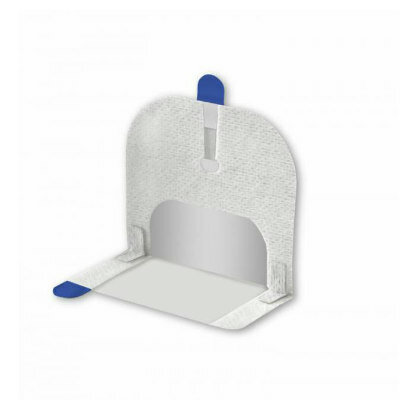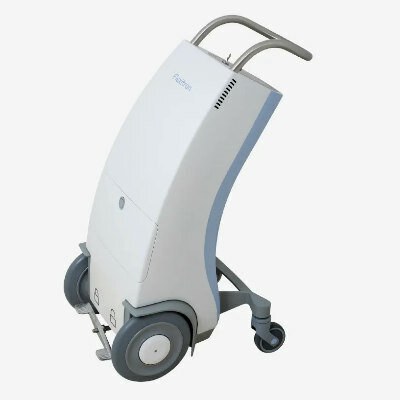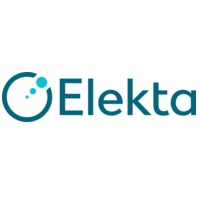MPI Technology Now Available to Medical Researchers in Australia
|
By MedImaging International staff writers Posted on 17 Jan 2017 |

Image: Magnetic Particle Imaging (MPI) that shows perfusion in the brain of a rat (Photo courtesy of AXT).
Medical researchers in Australia now have access to a new imaging technology called Magnetic Particle Imaging (MPI) that can give researchers improved insight into organ and tissue function, with sensitivity comparable to that of nuclear medicine, the speed of Computed Tomography (CT), and the resolution of Magnetic Resolution Imaging (MRI).
MPI provides improved sensitivity, resolution, and contrast over existing imaging technologies, by using Super Paramagentic Iron Oxide (SPiO) nanoparticles to tag cells anywhere in the body, at any tissue depth. MPI enables researchers to quantify what is actually happening in real time, and in vivo. In addition, MPI does not expose patients to ionizing radiation.
The new technology was part of a partnership agreement between AXT and Magnetic Insights. Momentum, the first MPI system can be used to generate quantitative images that analyze functional responses to drugs and treatments, in oncology, immunology, vascular function, and stem cell research, amongst others. The MPI technology could be used in the future to enable early detection and monitoring of neurovascular diseases such as stroke.
CEO of Magnetic Insight, Dr. Anna Christensen, said, “We are changing the landscape of diagnostic imaging with the impact of what MRI, PET and CT offered over 30 years ago. MPI complements many of the existing imaging modalities but also provides researchers and doctors levels of information that were not previously possible, all without radiation. We look forward to working with the team at AXT to bring this technology to Australia.”
MPI provides improved sensitivity, resolution, and contrast over existing imaging technologies, by using Super Paramagentic Iron Oxide (SPiO) nanoparticles to tag cells anywhere in the body, at any tissue depth. MPI enables researchers to quantify what is actually happening in real time, and in vivo. In addition, MPI does not expose patients to ionizing radiation.
The new technology was part of a partnership agreement between AXT and Magnetic Insights. Momentum, the first MPI system can be used to generate quantitative images that analyze functional responses to drugs and treatments, in oncology, immunology, vascular function, and stem cell research, amongst others. The MPI technology could be used in the future to enable early detection and monitoring of neurovascular diseases such as stroke.
CEO of Magnetic Insight, Dr. Anna Christensen, said, “We are changing the landscape of diagnostic imaging with the impact of what MRI, PET and CT offered over 30 years ago. MPI complements many of the existing imaging modalities but also provides researchers and doctors levels of information that were not previously possible, all without radiation. We look forward to working with the team at AXT to bring this technology to Australia.”
Latest Nuclear Medicine News
- New SPECT/CT Technique Could Change Imaging Practices and Increase Patient Access
- New Radiotheranostic System Detects and Treats Ovarian Cancer Noninvasively
- AI System Automatically and Reliably Detects Cardiac Amyloidosis Using Scintigraphy Imaging
- Early 30-Minute Dynamic FDG-PET Acquisition Could Halve Lung Scan Times
- New Method for Triggering and Imaging Seizures to Help Guide Epilepsy Surgery
- Radioguided Surgery Accurately Detects and Removes Metastatic Lymph Nodes in Prostate Cancer Patients
- New PET Tracer Detects Inflammatory Arthritis Before Symptoms Appear
- Novel PET Tracer Enhances Lesion Detection in Medullary Thyroid Cancer
- Targeted Therapy Delivers Radiation Directly To Cells in Hard-To-Treat Cancers
- New PET Tracer Noninvasively Identifies Cancer Gene Mutation for More Precise Diagnosis
- Algorithm Predicts Prostate Cancer Recurrence in Patients Treated by Radiation Therapy
- Novel PET Imaging Tracer Noninvasively Identifies Cancer Gene Mutation for More Precise Diagnosis
- Ultrafast Laser Technology to Improve Cancer Treatment
- Low-Dose Radiation Therapy Demonstrates Potential for Treatment of Heart Failure
- New PET Radiotracer Aids Early, Noninvasive Detection of Inflammatory Bowel Disease
- Combining Amino Acid PET and MRI Imaging to Help Treat Aggressive Brain Tumors
Channels
Radiography
view channel
Novel Breast Imaging System Proves As Effective As Mammography
Breast cancer remains the most frequently diagnosed cancer among women. It is projected that one in eight women will be diagnosed with breast cancer during her lifetime, and one in 42 women who turn 50... Read more
AI Assistance Improves Breast-Cancer Screening by Reducing False Positives
Radiologists typically detect one case of cancer for every 200 mammograms reviewed. However, these evaluations often result in false positives, leading to unnecessary patient recalls for additional testing,... Read moreMRI
view channel
PET/MRI Improves Diagnostic Accuracy for Prostate Cancer Patients
The Prostate Imaging Reporting and Data System (PI-RADS) is a five-point scale to assess potential prostate cancer in MR images. PI-RADS category 3 which offers an unclear suggestion of clinically significant... Read more
Next Generation MR-Guided Focused Ultrasound Ushers In Future of Incisionless Neurosurgery
Essential tremor, often called familial, idiopathic, or benign tremor, leads to uncontrollable shaking that significantly affects a person’s life. When traditional medications do not alleviate symptoms,... Read more
Two-Part MRI Scan Detects Prostate Cancer More Quickly without Compromising Diagnostic Quality
Prostate cancer ranks as the most prevalent cancer among men. Over the last decade, the introduction of MRI scans has significantly transformed the diagnosis process, marking the most substantial advancement... Read moreUltrasound
view channel
Deep Learning Advances Super-Resolution Ultrasound Imaging
Ultrasound localization microscopy (ULM) is an advanced imaging technique that offers high-resolution visualization of microvascular structures. It employs microbubbles, FDA-approved contrast agents, injected... Read more
Novel Ultrasound-Launched Targeted Nanoparticle Eliminates Biofilm and Bacterial Infection
Biofilms, formed by bacteria aggregating into dense communities for protection against harsh environmental conditions, are a significant contributor to various infectious diseases. Biofilms frequently... Read moreNuclear Medicine
view channel
New SPECT/CT Technique Could Change Imaging Practices and Increase Patient Access
The development of lead-212 (212Pb)-PSMA–based targeted alpha therapy (TAT) is garnering significant interest in treating patients with metastatic castration-resistant prostate cancer. The imaging of 212Pb,... Read moreNew Radiotheranostic System Detects and Treats Ovarian Cancer Noninvasively
Ovarian cancer is the most lethal gynecological cancer, with less than a 30% five-year survival rate for those diagnosed in late stages. Despite surgery and platinum-based chemotherapy being the standard... Read more
AI System Automatically and Reliably Detects Cardiac Amyloidosis Using Scintigraphy Imaging
Cardiac amyloidosis, a condition characterized by the buildup of abnormal protein deposits (amyloids) in the heart muscle, severely affects heart function and can lead to heart failure or death without... Read moreImaging IT
view channel
New Google Cloud Medical Imaging Suite Makes Imaging Healthcare Data More Accessible
Medical imaging is a critical tool used to diagnose patients, and there are billions of medical images scanned globally each year. Imaging data accounts for about 90% of all healthcare data1 and, until... Read more
Global AI in Medical Diagnostics Market to Be Driven by Demand for Image Recognition in Radiology
The global artificial intelligence (AI) in medical diagnostics market is expanding with early disease detection being one of its key applications and image recognition becoming a compelling consumer proposition... Read moreIndustry News
view channel
Bayer and Google Partner on New AI Product for Radiologists
Medical imaging data comprises around 90% of all healthcare data, and it is a highly complex and rich clinical data modality and serves as a vital tool for diagnosing patients. Each year, billions of medical... Read more




















